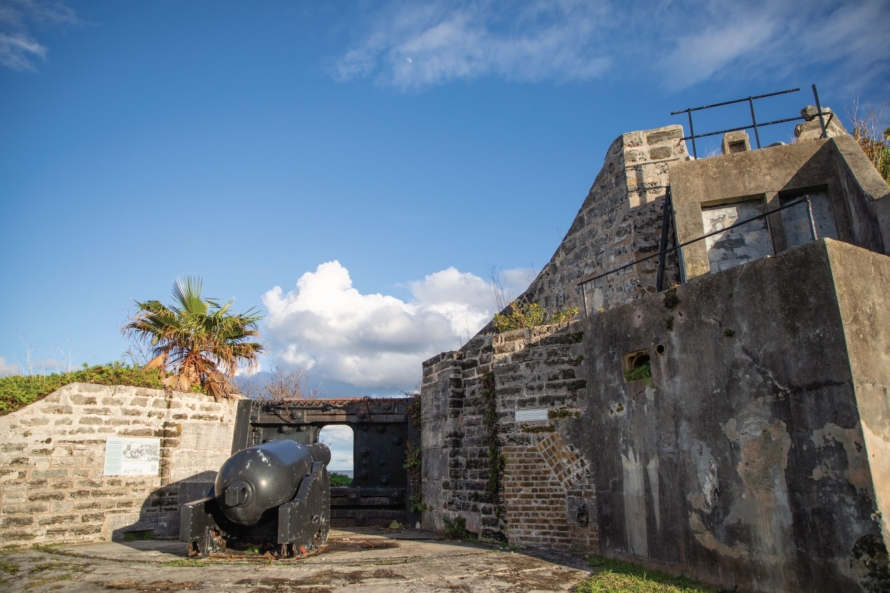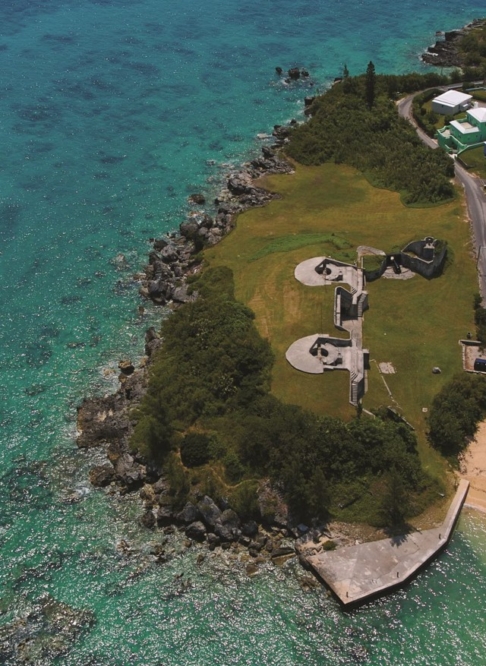
In 1865, the British fortifications officer W. Drummond Jervois described Buildings Bay Battery as fort positioned to defend the Narrows Channel, part of the strategic defense system stretching between Fort Cunningham and Fort St. Catherine.
Little else is known of the work which became Alexandra Battery following modifications to accommodate the threat posed by iron-plated ships and rifled artillery, marking a significant shift in military defense technology.
The redesign included the installation of five 9-inch Rifled Muzzle Loaders (RMLs) with iron fronts—Gibraltar Shields—a new defensive feature. The construction was completed by 1869 with notable design features such as the iron-plated gunports, open-rear emplacements and no defense works at the back of the fort.
The battery was a significant advancement in the fortifications of Bermuda, particularly as it did not include traditional rear defenses, a trend that would become more common in later fortifications (early 20th century).
In the early 1900s, Alexandra Battery was modified to house two 6-inch Breech-Loading (BL) rifles, demonstrating a continued adaptation to technological advances in artillery.
A small archaeological project in 1985 uncovered and restored parts of the battery, including a 9-inch RML gun, which had been placed on exhibit at the Bermuda Maritime Museum, today the National Museum of Bermuda.
Reference: Edward C. Harris, Bermuda Forts 1612-1957, 1997.

